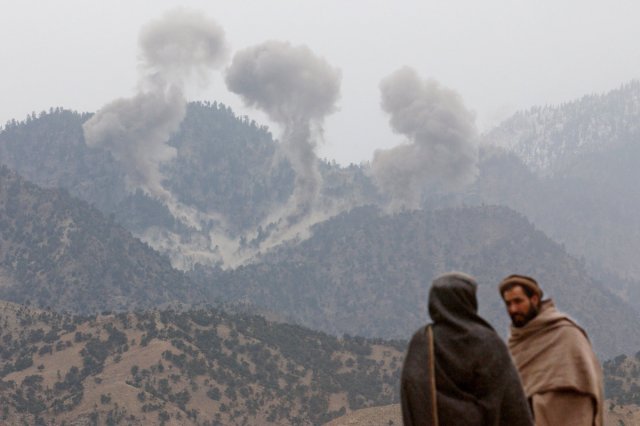Tora Bora is rarely far from my mind every time the expulsion of Assad’s opponents to Idleb province is discussed. I cannot keep myself from returning to that scenario, where Al-Qaeda’s fighters were assembled in those caves of eastern Afghanistan to have the deadliest weapon at the time tested. Perhaps we have not forgotten that the “Mother of All Bombs,” which was dropped by the United States on these caves, has been the biggest, heaviest, and most destructive non-nuclear bomb used so far.
The Tora Bora comparison is strengthened whenever the international community agrees — and this is perhaps the only source of agreement about Syria — that all the fighters in reconciliation and settlement areas depart for Idleb, even without the reasons being mentioned. Why are they sent to Idleb alone despite the presence of other liberated areas which may be closer?
In short: The deportation, or agreement to deport about 6,000 fighters from the outskirts of Lebanon’s Arsal to Idleb province, explains all scenarios that have been proposed and questions that have remained unanswered since the deportation of the Zabadani and Madaya fighters, and those from Daraya and Moadhimiyeh and Waer in Homs, to Syria’s “Tora Bora.”
New questions have occurred since the Arsal agreement, which victory for Hezbollah and a gift presented to ally Iran, at a time when it is in dire need of justifying its crimes in Syria and the number of dead it has lost for “Zainab and Hussein,” in addition to reproducing itself in Lebanon, the region and internationally, as the force which is “fighting terrorism” and “vanquishing the extremist occupiers” and expelling them outside Lebanon’s borders.
The reasons were also not clarified around the end of the functional role of the fighters there — was it related to the nearing of the end of fighting, for a solution to be imposed, as has been rumored, beginning with a constitution, and then elections, and then federalism, and a presidential council?
The remaining questions today with Raqqa’s liberation (if that is what you can call it) from ISIS is whether the fighters of that group will head to Idleb after they “repent” and return to their bases which they left at the start of 2014, whether with the Nusra Front or the other groups including the Free Syrian Army.
Perhaps the last question, and the most painful, is what will they all do in Idleb?
Will a safe zone or de-escalation zone be imposed, like the quadrangle of Astana, and it will be an “emirate” for a miniature dream, with the Hayat Tahrir al-Sham Front, which won out — also with another puzzling question — over Ahrar al-Sham recently, imposing sharia law, to be an excuse for the intervention of anyone with the interest and influence?
Will there be messages or punishments for Turkey, carried out by Iran and the United States, and with the approval or silence of Russia, to plant bombs and explosive ideologies along the Turkish border, to be expanded or mobilized whenever the time has come to pressure Ankara?
Or — and this is the scenario closest to the logic of war — will the fighters be gathered, both revolutionaries and those riding the revolution, to be eliminated by a new “Mother of All Bombs” which the Russians are trying to test in Idleb as a response to the American “Mother of All Bombs” in Afghanistan, to bury the Syrians’ revolution under the rubble?
As for the question of the fate of the civilians from Idleb or who came along with the fighters from the Damascus and Homs countryside, and maybe from Mosul yesterday and Raqqa today, the answer will be clearer.
This article was translated and edited by The Syrian Observer. Responsibility for the information and views set out in this article lies entirely with the author.


